Are Arugula And Spinach The Same Thing? What Is The Difference? Arugula and spinach are some of the most popular greens that are available with both plants widely used in salads. So are these two leafy greens actually the same plant? If not what’s the difference?
Arugula and spinach are distinct and separate species that produce leaves that have different shapes and a distinctly different taste. Arugula has a relatively peppery taste while spinach is relatively bland. Additionally, spinach leaves have a rounded leaf with relatively thick flesh whereas is arugula has a shape that is not dissimilar to an oak leaf with several lobes on the leaf.
To show the difference in the leaf shape I have included photographs which will show the distinctly different shapes between the two plants.
The other things that are common about these two plants are that they generally are grown in the cooler months of the year as both plants have a tendency to bolt very rapidly which means that they most commonly appear in winter salads. However, due to arugula’s strong flavor, it is most commonly used in combination with other types of lettuce.
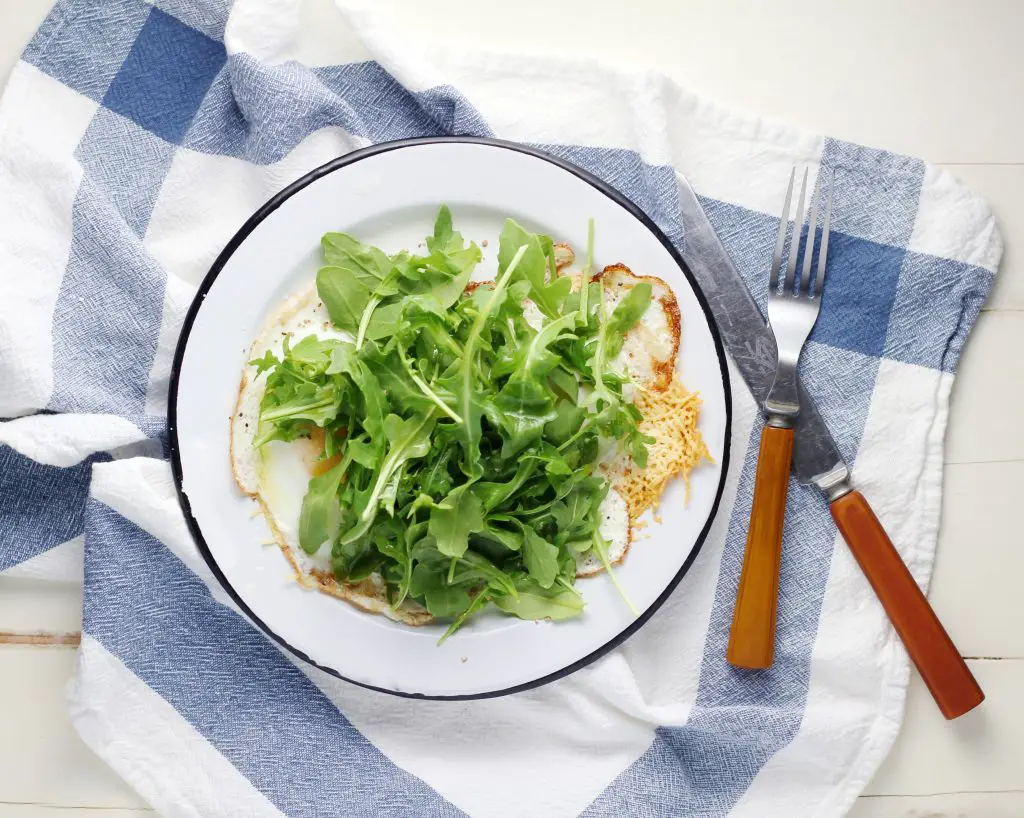
Which Is Better For You Arugula Or Spinach?
While leafy greens are generally considered to be quite healthy options they are not all equal. Spinach is superior to arugula in terms of its nutrient values. According to soupersage.com spinach has higher levels of a range of important nutrients which are listed below;
- Spinach has 294% more Vitamin A than arugula
- Spinach has 87% more Vitamin C than arugula
- Spinach has 372% more Vitamin E than arugula
- Spinach has 345% more Vitamin K than arugula
- Spinach has 86% more iron than arugula
- Spinach has 51% more potassium than arugula
Additionally, Spinach has more riboflavin, niacin, Vitamin B6 and folate. The one area where arugula has the advantage is in the calcium levels which are approximately 60% higher.
However, despite these large differences arugula is still a very healthy option compared to many other types of foods and should not be discounted completely from your diet.
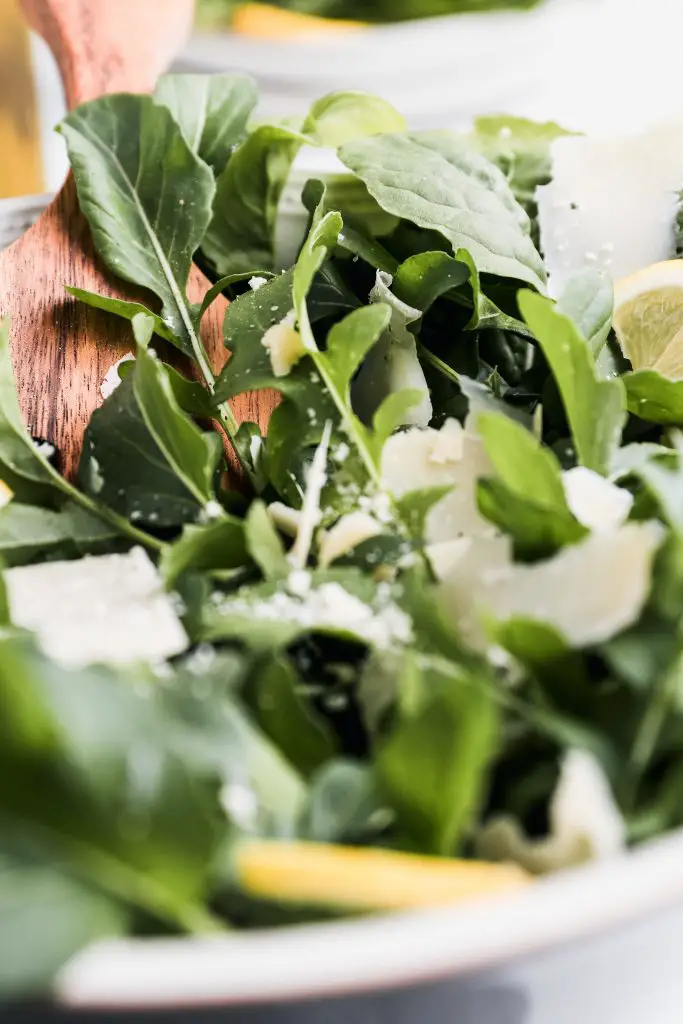
About Arugula
Arugula, which is sometimes referred to as rocket, in places like the UK and Australia is a member of the brassica family and is not related to common lettuce varieties. The plant originated in the Mediterranean region and has been widely used for thousands of years as a edible and medicinal plant.
And while leaves are traditionally what is eaten, all parts of the plant are in fact edible including the pods and flowers which are produced. It was traditionally collected from the wild however as it is gain popularity it has been increasingly cultivated commercially and also at home.
It is an extremely useful plant to grow in the garden because it produces a crop relatively quickly and is ideal for helping to fill the hungry gap in early spring due to the speed of growth at that time of year as it is also frost-tolerant.
How To Grow Arugula
Arugula is an extremely easy plant to grow and as mentioned above it will produce a crop within a matter of 1 to 2 months depending on the maturity of the leaves that you pick. There is a relatively wide range of varieties to get more information try visiting our vegetable database which details some of the varieties that are available.
If you need to buy seed we would recommend that you visit seeds now because they have a wide range of vegetable seeds and relatively cheap compared to other supplies.
To start growing the seeds you can sow them either in the garden or into a seed tray. However, if you want to get an early start on your planting we would highly recommend that you plant in seed trays in late winter early spring when the weather is still a little frosty in the mornings.
To plant the seed start by filling a seed tray with a good quality seed raising mix. The seeds should be planted at the depth of 0.5 inches (1 to 2 cm). If you are using a modular seed tray we would recommend planting 3 to 4 seeds per cell. If you are planting directly into the garden the easiest way is to make a furrow and gently sprinkle in the seeds sowing them finely as possible.
The seeds will germinate after 7 to 14 days and it may be necessary to thin your sowings to ensure that the plants are not too crowded. In seed trays I would thin to the strongest seedling in each cell and if you’re sowing into the garden I recommend thinning the plants to ensure that the they are approximately 3 to 4 inches apart.
When you are planting into a seed tray the seedlings will typically need to spend 4 to 6 weeks in there before they can plant it out into the garden. When planting them out into the garden select a sunny location that has rich moist and free draining soil. If there are not enough nutrients in the soil we would recommend adding a bag of compost before planting.
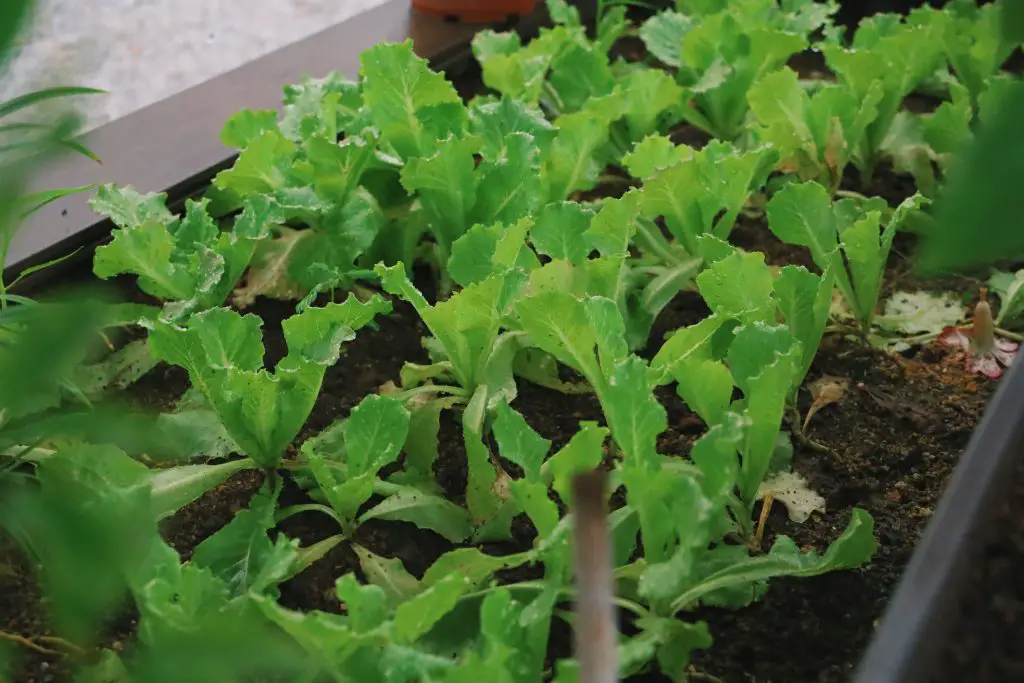
However, it’s important to note that arugula will also tolerate shady conditions and this is recommended if the conditions are starting to warm up as that will reduce the speed at which the plant runs to seed.
While the plant can be grown at any stage during the growing season it is generally a good idea to avoid the peak of summer because it will bolt very quickly.
Once the seedlings are in the ground it is advisable to apply a layer of mulch and also snail bait to protect the young seedlings as they are highly susceptible to slug and snail attack.
When the plants become established in the garden you can expect to be harvesting the leaves within a couple of weeks. To get the best out of the plant it is advisable to pick leaves regularly to encourage new growth.
About Spinach
Spinach is a popular leafy green that originated in the Western part of Asia and is used in both fresh salads and also in cooking. It comes from the Amaranthaceae family and Is thought to have originated approximately 2000 ago years. However, the plant did not spread into Europe and China until around 600 to 800AD.
It was slow to spread in Europe with a historical records indicating that it did not appear in Spain or England until the 14th century.
The plant itself is a frost tolerant plant that can be overwintered in some locations depending upon how mild the winter are. Spinach can tolerate temperatures of as little as 20°F (-7°C) however at temperatures below freezing it is generally considered a good idea to provide the plants some degree of protection this can include things like thick layers of mulch or using a row cover to protect the plant from snow.
It has a low growing habit that is typically 8 to 10 inches tall and producers rounded green leaves that are a couple of inches wide however smaller baby spinach leaves are sold commonly.
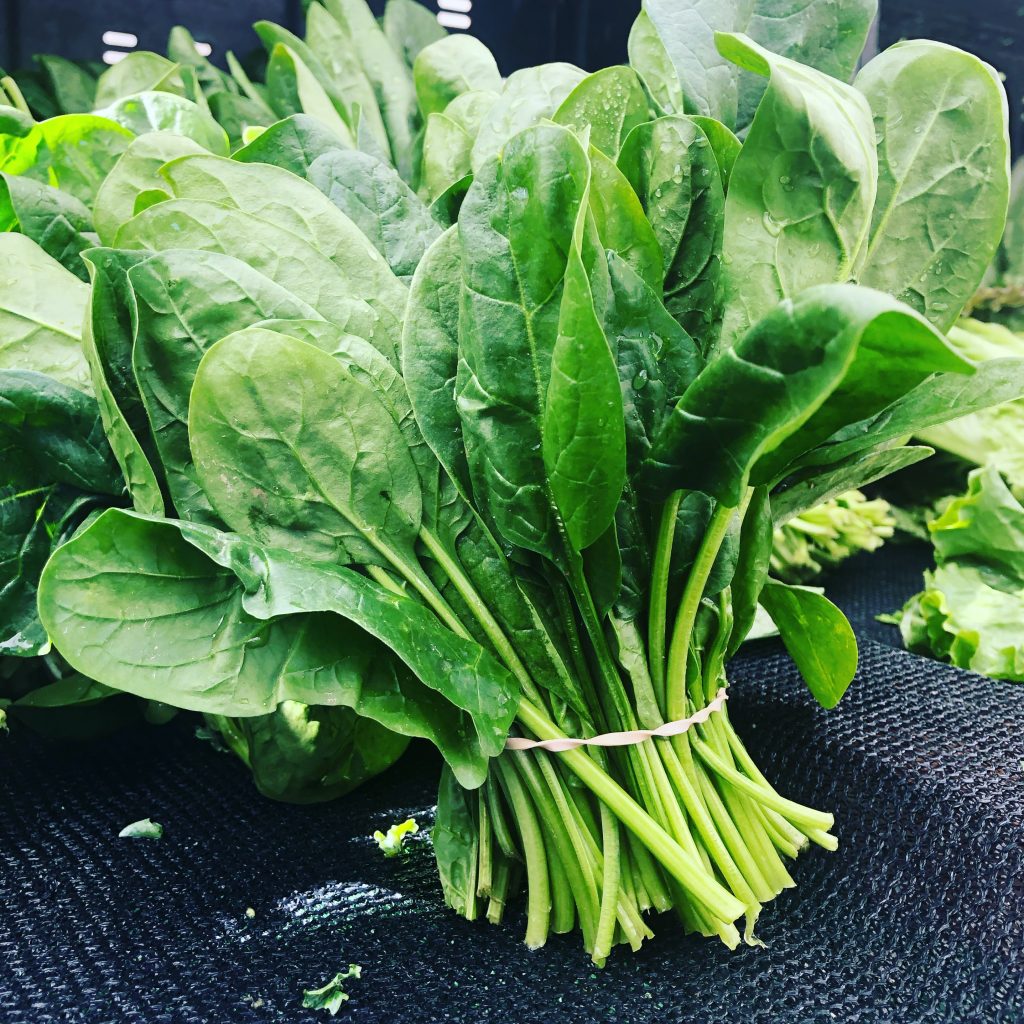
How To Grow Spinach
Spinach is best grown in the cooler parts of the year in either Autumn, Winter, or Spring depending upon your specific climate. Generally the plant does not like heat and sowing from late spring onwards is not advised.
Ideally, sowing should commence in late winter or early spring and then subsequent sowing can be completed in late summer or autumn to ensure that leaves are available in winter.
When sowing in late Winter or Spring it is best to start the plant off in seed trays indoors. The reason for this is, despite the plant preferring cooler temperatures, they still need some degree of warmth to ensure a reasonable rate of growth.
To sow seeds start by filling a seed tray with good quality seed raising mix and then plant the seeds at a depth of 1 to 2 cm into the soil. Ensure that the seed tray remains moist at all times by watering at least every second day. Under these conditions seedling should appear after a week or so.
Ideally the plants should remain in the seed tray for approximately 6 weeks to ensure that they are large enough to plant into the garden. When placing the plants into the garden they should ideally be planted 6 to 10 inches apart in rich moist and free-draining soil. The location that they are planted in should ideally get a couple of hours of sun per day.
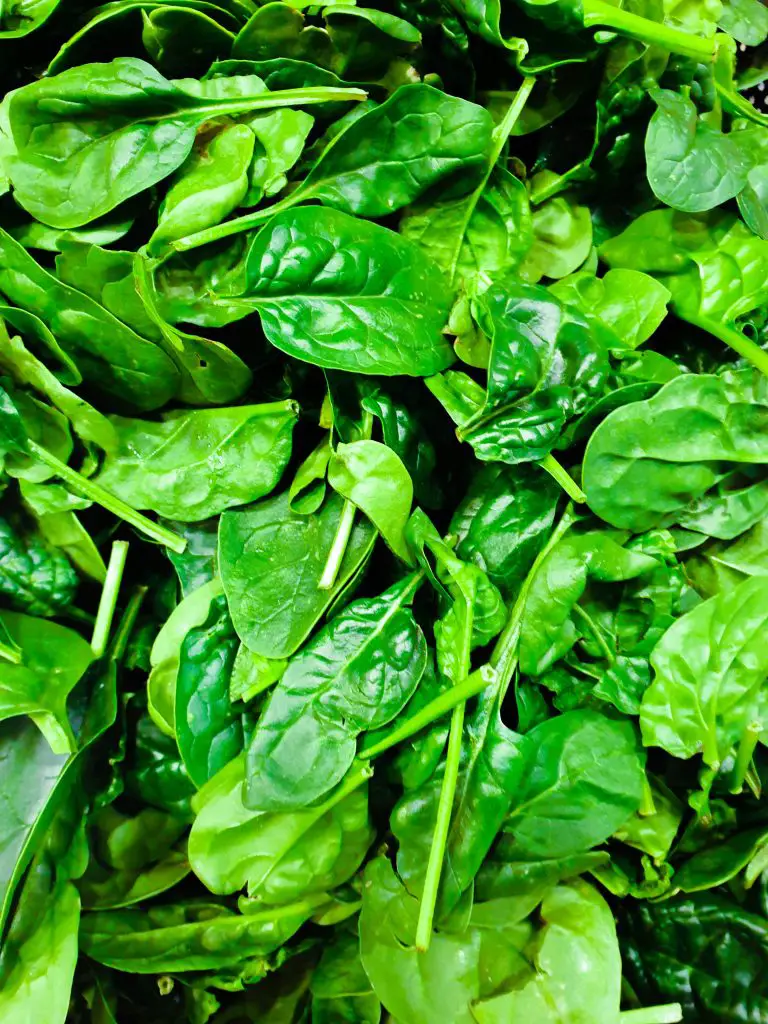
As they are highly susceptible to attack from slugs and snails it is important to sprinkle snail bait around the plants to protect them. The snail bait should be applied after the layer of mulch is put down on the ground to maximize there effectiveness.
As spinach is a relatively fast growing you can expect to the picking baby leaves within 2 to 3 weeks depending upon the climatic conditions. When harvesting leaves it is important to ensure that you leave at least some of the leaves on the plant so it can continue to photosynthesize. This will ensure that it reduces the time between harvests by ensuring continuous growth.
As you approach the warmer parts of the year the quality of the leaves will start to deteriorate as the plant starts to flower. It is generally a good idea to remove the plants at this stage and use other leafy greens that prefer the warmer weather. We highly recommend that you also grow chard and kale as they are more tolerant of warm conditions and this will ensure that you have a continuous supply of leafy greens throughout the year.
I hope that you found this article useful. If you have any questions or comments please leave them in the section below.
Relevant Articles
Chard Vs Spinach: Are They The Same Thing?
Is Rockmelon And Cantaloupe The Same?
Can You Rosemary From Grocery Store Herbs? Is It Possible?

